Updated on January 12, 2024
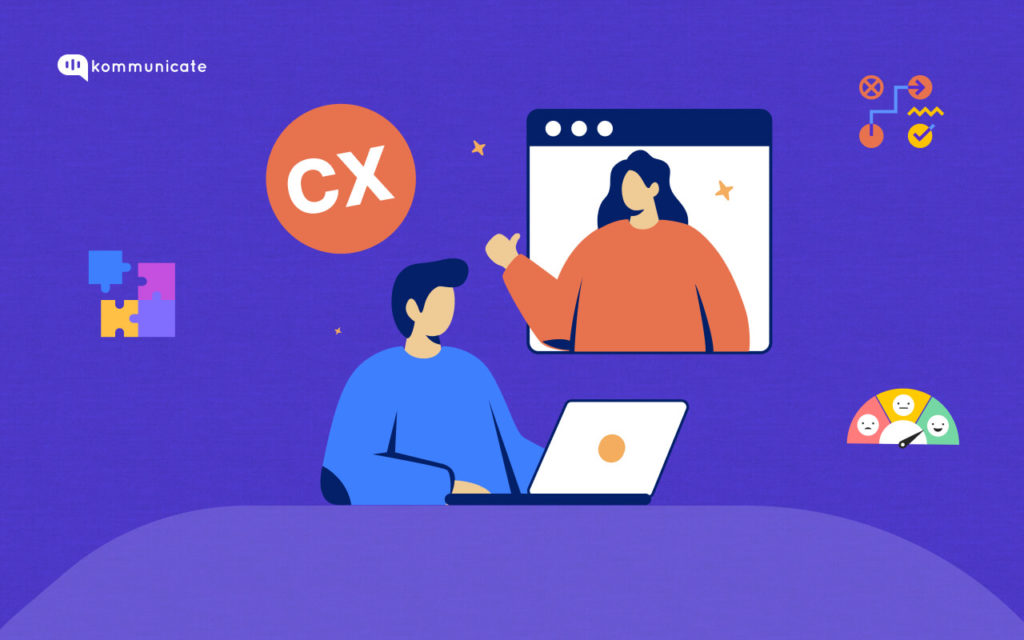
In a large enterprise, the role of a Product Manager emerges as a linchpin for success. A PM is someone who paves the path for the growth of the product and turning into a cash cow for the business.
Marty Cagan, in his seminal work “Inspired,” succinctly captures the essence of this pivotal role. He notes that a Product Manager is responsible for “finding a product that is valuable, usable, and feasible.”
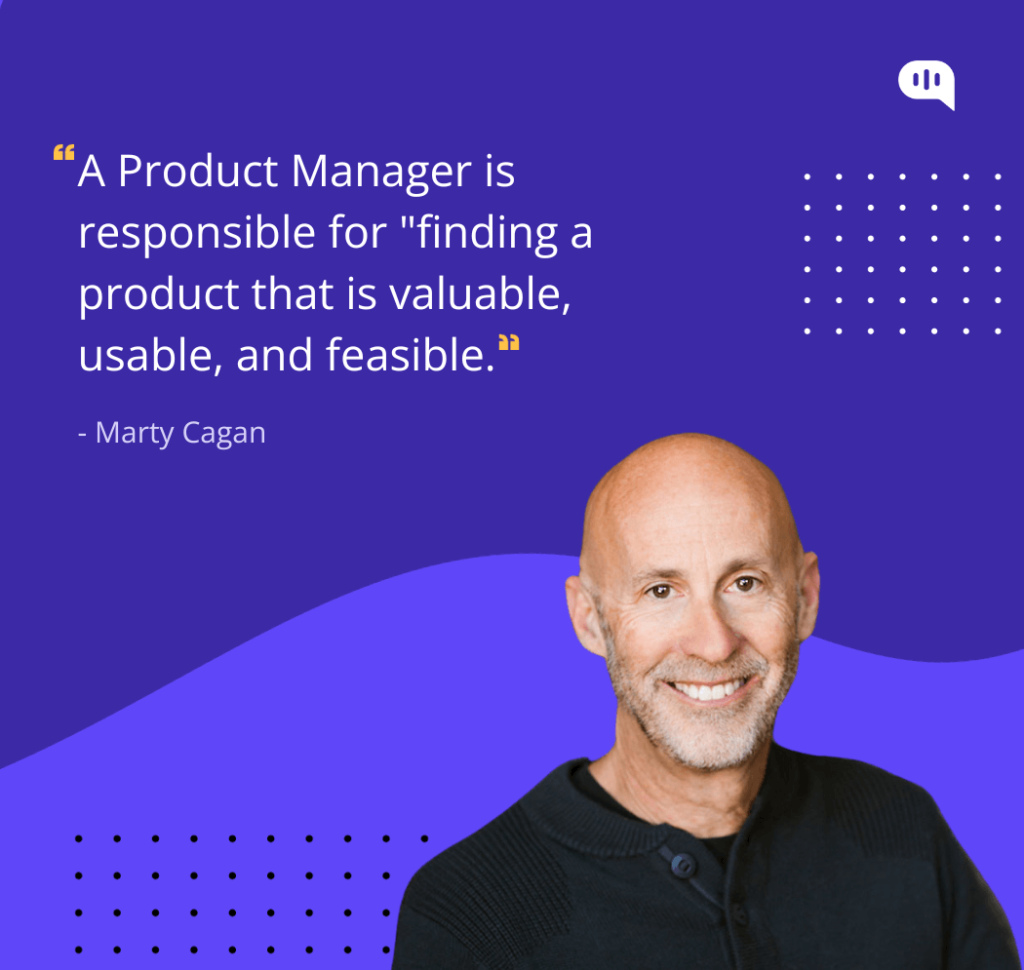
This encapsulates the multifaceted responsibilities that extend from ideation to delivery, making product managers the architects of solutions that resonate with both the market and internal capabilities. A product manager is someone who has 3600 view and control of product development.
Their strategic position also makes them responsible for solving customer experience issues that the enterprise could be facing. The success of any product-based company is directly proportional to its ability to meet and exceed customer expectations.
In this blog, we will cover a comprehensive list of strategies and tactics that will help solve complicated customer experience challenges in a large enterprise. From adopting a customer-centric mindset to leveraging data-driven decision-making, seamless cross-functional collaboration, and crisis management strategies, each section aims to equip Product Managers with actionable insights and proven methodologies for resolving customer experience issues effectively.
Common Customer Experience Issues in Large Enterprises
Due to their sheer size, complicated processes, and the involvement of several stakeholders, several common customer experience challenges emerge. Each of them pose unique hurdles to seamless interactions and lasting customer satisfaction.
The most common ones are:
1. Inconsistent Service Delivery
In large organizations, maintaining consistency in service delivery across diverse touch points proves challenging. Variances in service quality may stem from differences in employee training, departmental practices, or geographical locations. Customers, expecting a uniform experience, may encounter disparities that erode trust and hinder brand loyalty.
2. Lack of Personalization
The sheer scale of large organizations often hinders the ability to personalize customer interactions effectively. Customers increasingly expect tailored experiences, and failure to meet this demand can result in a generic and impersonal relationship. Personalization challenges may arise due to limited data utilization, inadequate technology, or insufficient understanding of individual customer preferences.
3. Communication Gaps Across Channels
Siloed communication channels within large organizations contribute to disjointed interactions. A customer may initiate communication through one channel and continue the conversation on another, encountering inconsistencies in information and service. Bridging these communication gaps necessitates a cohesive strategy, integrating various channels to provide a seamless and unified customer experience.
4. Slow Response Times
In large enterprises, navigating internal processes for swift responses poses a significant challenge. This can lead to delayed responses to customer inquiries or concerns. Cumbersome internal processes, hierarchical structures, or insufficient workforce agility may contribute to extended response times. In an era where customers demand immediacy, sluggish responses can lead to frustration and dissatisfaction.
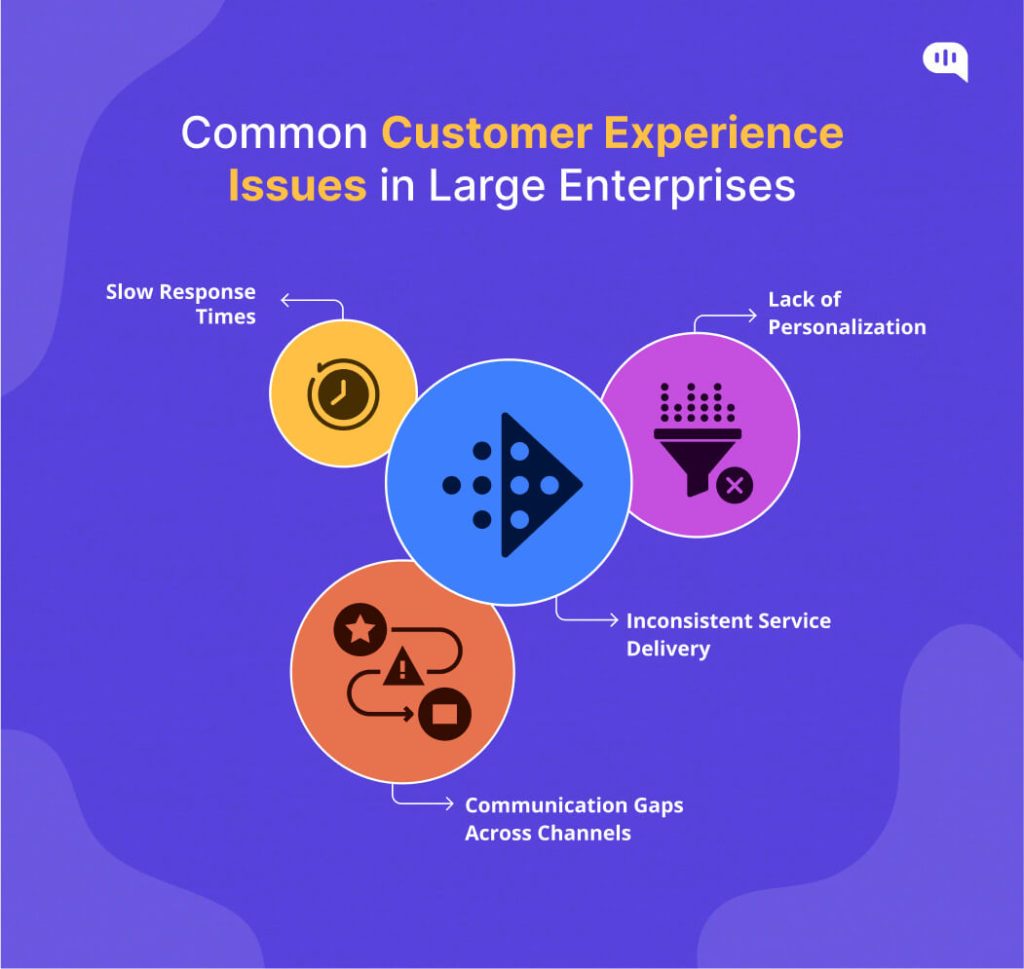
5. Insufficient Integration of Technology
The adoption of advanced technologies for enhancing customer experiences can lag in large enterprises, resulting in outdated systems and processes that hinder efficiency. Legacy systems, disparate databases, or outdated technologies may hinder the adoption of innovative tools for customer engagement. This limitation not only impacts operational efficiency but also impedes the organization’s ability to stay abreast of technological advancements that could enhance the overall customer experience.
6. Complex Product Offerings
Large organizations often boast extensive and intricate product portfolios. This sprawling breadth and complexity of offerings can overwhelm customers, leading to confusion, indecision, and dissatisfaction.

This challenge requires organizations to streamline product communication, enhance user guidance, and employ intuitive user interfaces to simplify the customer journey. By doing so, customers can more effectively navigate product options and make informed choices.
7. Limited Flexibility in Problem Resolution
The bureaucratic structures inherent in large organizations can contribute to limited flexibility in problem resolution. Rigidity in procedures and a lack of empowerment for frontline employees may hinder the organization’s ability to adapt swiftly to unique customer issues.
To address this challenge, empowering employees with decision-making authority, fostering a culture of proactive issue resolution, and implementing agile problem-solving methodologies become imperative.
8. Employee Training and Alignment
Ensuring that a diverse workforce is aligned with customer-centric values requires ongoing training. In large enterprises, achieving this alignment across departments can be a considerable challenge.
Large organizations may struggle to provide consistent and ongoing training that reinforces a customer-centric mindset across all departments. This challenge necessitates a concerted effort to invest in comprehensive training programs. The emphasis is on the importance of customer satisfaction and aligning employees with the organization’s overarching CX goals.
These are some of the several challenges. Although challenges are plenty, there are proven strategies that will aid in resolving these challenges and deliver a positive customer experience.
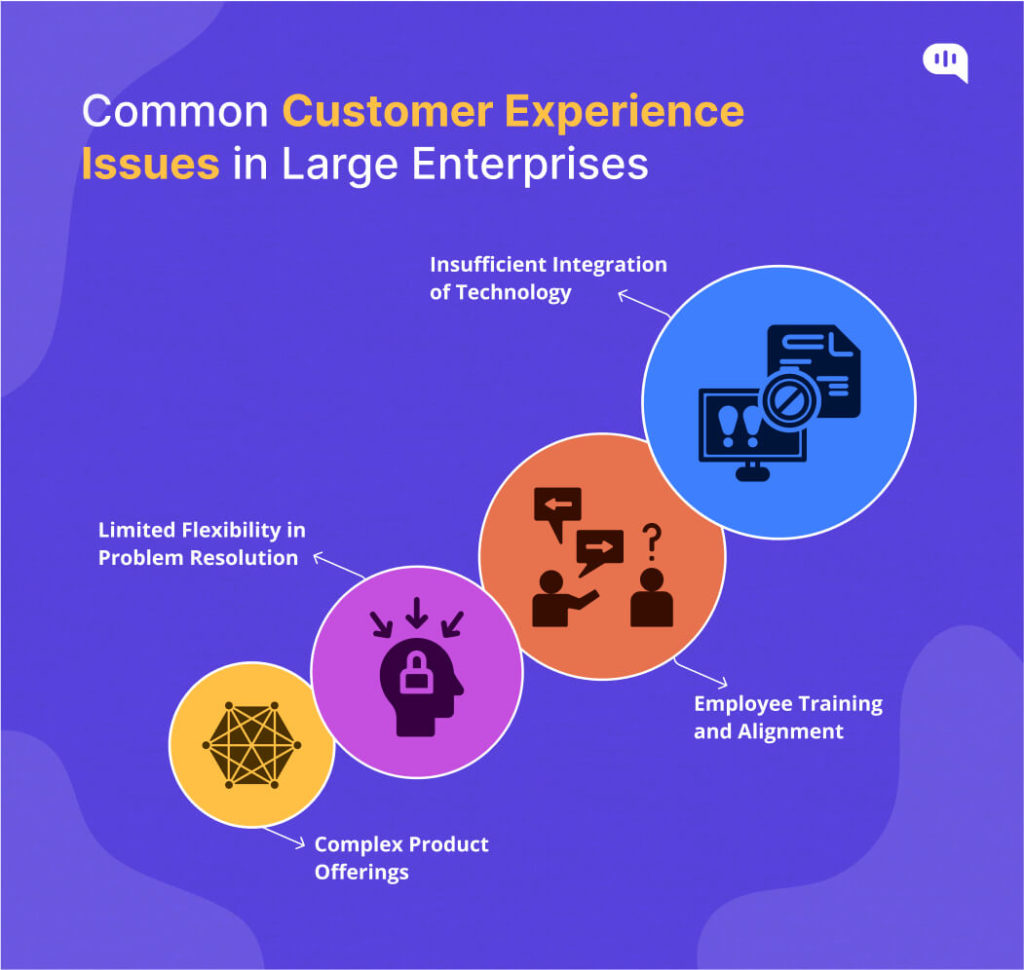
Strategies for overcoming CX challenges as product manager
Addressing these challenges necessitates a concerted effort to streamline internal processes, foster a customer-centric culture, and invest in advanced technologies. Large organizations that successfully navigate these hurdles position themselves to provide a more consistent, personalized, and responsive customer experience, ultimately fostering customer satisfaction and loyalty in a competitive market.
We will discuss some such strategies such as:
- Customer-Centric Product Development
- Building Cross-Functional Teams
- Data-Driven Decision Making
- Implementing Proactive Monitoring Systems
- Automating Customer Support and Feedback Management
- Employee Training and Empowerment
- Crisis Management and Recovery
1. Adopting a Customer-Centric Mindset: A Catalyst for CX Issue Resolution
Embracing a customer-centric mindset emerges as a foundational strategy with transformative potential for issue resolution. Rooted in a cultural shift, this approach permeates every organizational facet, offering profound solutions to CX challenges.
A customer-centric mindset compels teams to actively seek and empathize with customer pain points. This proactive engagement, as advocated in Customer-Centricity by Peter Fader and Sarah Toms, involves prioritizing customer feedback and immersing in customer journeys. This will help gain insights into challenges users face.
Further, a customer-centric mindset ensures that product development actively incorporates customer feedback at every stage. This has a cascading effect on improving customer satisfaction and experience.
2. Building Cross-Functional Teams for Enhanced Customer Experience
Silos within large organizations often hinder seamless communication and collaboration among different departments, which restricts the delivery of customer-centric solutions.
By dismantling silos, teams can leverage diverse expertise to collectively address customer pain points and create a more unified, customer-focused approach.
This makes the formation of cross-functional teams with the common goal of delivering a delightful customer experience (CX) an imperative for any enterprise.

The synergy achieved through cross-functional collaboration empowers teams to navigate intricate customer journeys with a comprehensive understanding. This interconnectedness enhances the ability to identify and resolve customer issues promptly, adapt to evolving preferences, and streamline processes for a more efficient CX delivery.
This approach not only aligns teams with the overarching goal of customer satisfaction but also cultivates an organizational culture that thrives on collaboration, responsiveness, and continuous improvement.
3. Data-Driven Decision Making: A Logical Way to Solve Customer Service Problems
A Data-Driven Decision Making (DDDM) culture, grounded in historical and predictive data analysis, serves as a powerful tool for resolving customer service (CS) problems in large enterprises. By harnessing insights gleaned from data, organizations can make informed decisions, anticipate customer needs, and enhance overall customer satisfaction.
There are several ways a large enterprise can embrace data-driven decision-making. The most commonly available methods are:
- Customer surveys
- Social media monitoring
- Website analytics
- Customer feedback forms
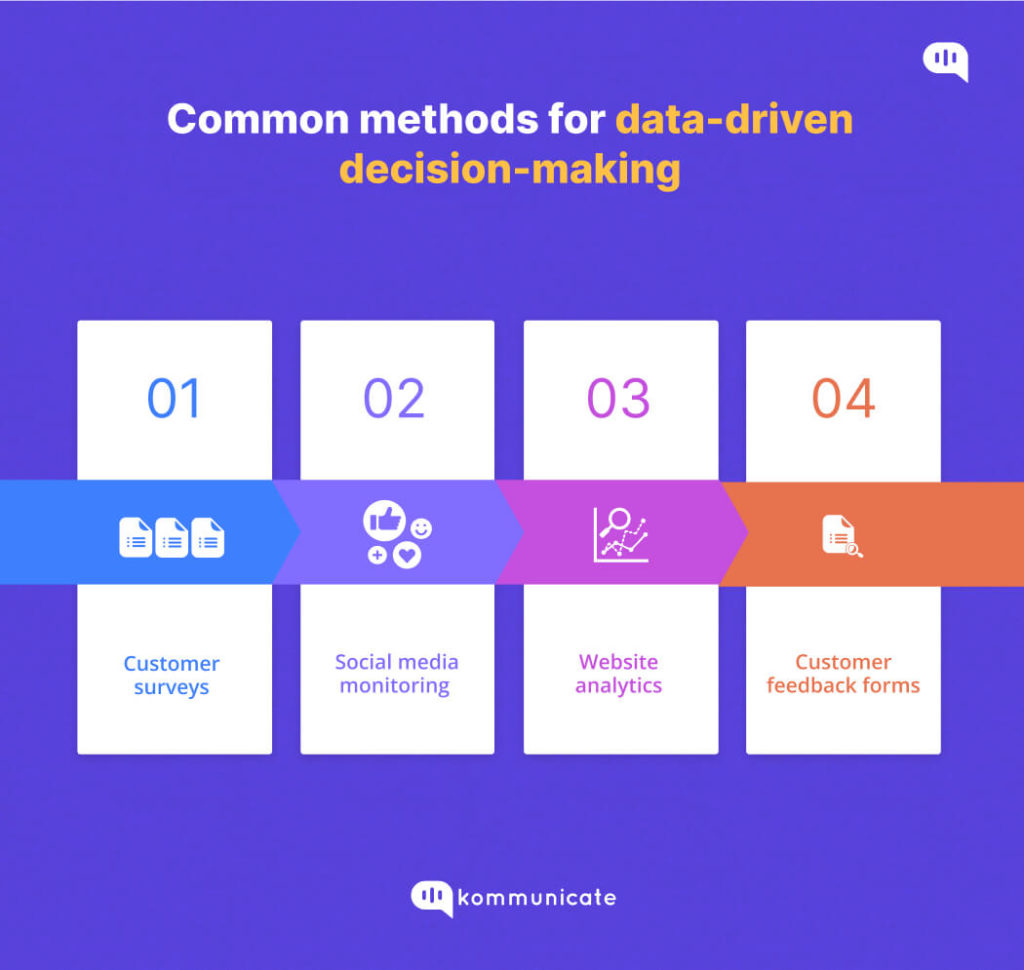
Analyzing this data involves employing methods like sentiment analysis, cohort analysis, and predictive modeling. Integration of Customer Relationship Management (CRM) systems and helpdesk tools further centralizes and streamlines data for comprehensive analysis.
It should also be remembered that customer data serves as a compass for strategic product enhancements. Analyzing customer preferences, behavior, and feedback enables product managers to identify areas for improvement, innovate features, and align product development with evolving customer expectations.
4. Implementing Proactive Monitoring Systems: Addressing issues before they arise
Predictive analytics allows organizations to identify potential CX issues before they manifest, enabling proactive interventions. By predicting when and where issues may arise, resources can be allocated more efficiently to address critical areas. This will help to preven widespread problems. Most product-led companies also rely on product usage data and Product Engagement Score to isolate features where customers find most trouble with.
They then weave in-product messaging or revamp the product so that there is elimination of CX challenges, before they become full-blown customer support challenges. Anticipating and addressing issues before they impact a large number of customers contributes to overall satisfaction, fostering loyalty and positive brand perception.

Further, it also helps in drastically reducing the costs associated with reactive problem-solving by preventing issues that could lead to financial repercussions or reputation damage.
The insights derived from predictive analytics contribute to a culture of continuous improvement, allowing organizations to refine processes and enhance CX iteratively.
5. Automating Customer Support and Feedback Management
Automation emerges as a key driver in delivering customer support and in managing customer feedback. You must be aware by now that improving customer support efficiency is key to improving CX. Implementing automated processes for common queries, ticket routing, and feedback collection not only accelerates response times but also ensures consistency in service.
This requires that all the tools you use, specifically CRM, helpdesk, and the chatbots should be integrated with each other. By embracing CRM and Helpdesk integration and leveraging automation, organizations create an environment where customer interactions are streamlined, issues are resolved efficiently, and valuable feedback is systematically collected. This integration not only enhances operational efficiency but also contributes significantly to an improved overall customer experience.
Kommunicate, a powerful customer support and engagement platform, can help centralize customer communication channels, ensuring that the support team can seamlessly access and manage customer interactions within a unified interface.
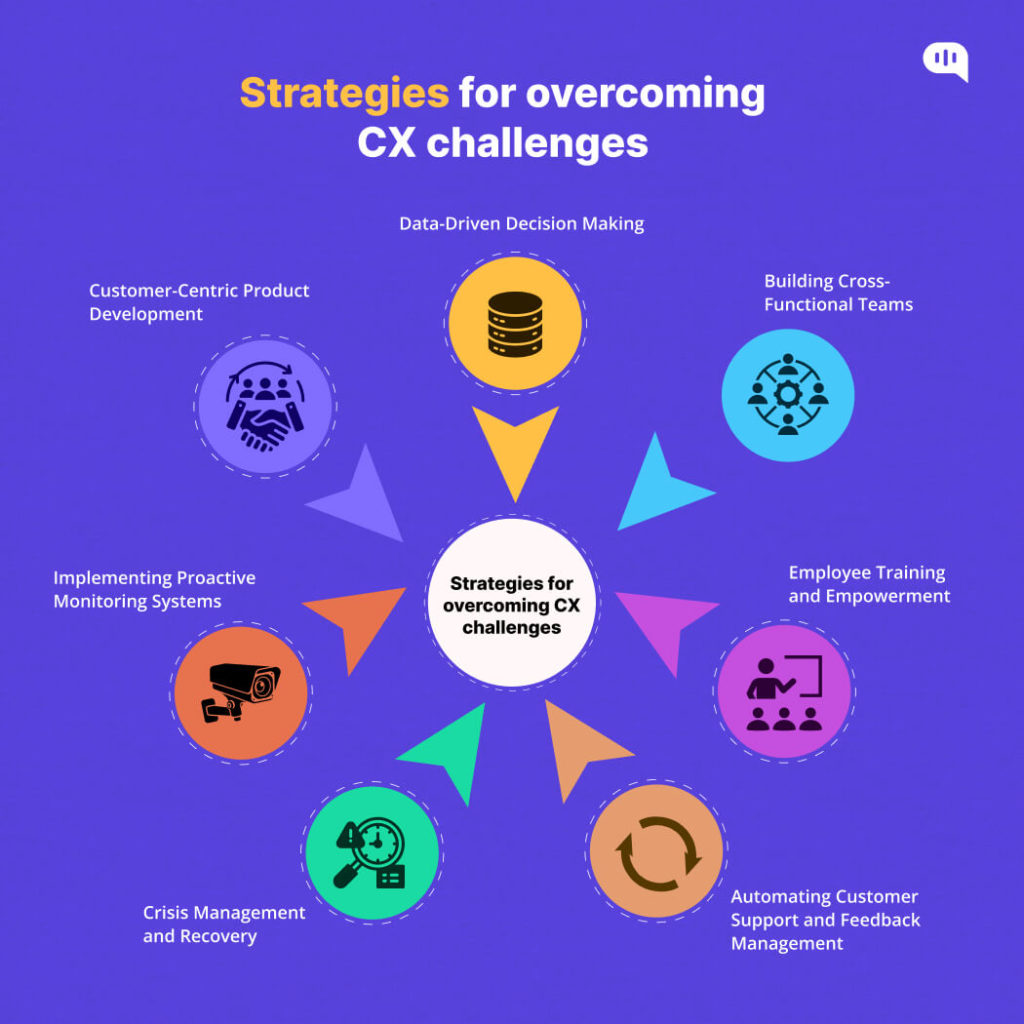
6. Employee Training and Empowerment: Fostering a Customer-Centric Culture
One cornerstone of building a customer-centric company culture lies in the thorough training of product teams. These teams are the architects of customer experience, responsible for crafting products aligned with customer needs. Training should encompass not only technical skills but also instill a deep understanding of customer expectations. Further, it should extensively cover development of soft skills such as active listening, empathy, and effective communication.
Similarly, empowering frontline employees is equally critical in nurturing a customer-centric culture. These employees are the face of the organization and often the first point of contact for customers. Empowerment involves granting them the autonomy to make decisions, resolve issues, and personalize interactions.
This empowerment not only enhances customer interactions but also fosters a sense of pride and commitment among employees, aligning their efforts with the organization’s broader customer-centric goals.
7. Crisis Management and Recovery: Navigating Challenges with Resilience
This is a proactive and adaptive approach to crisis management. By preparing for crises, responding rapidly and transparently, and learning from each experience, product managers can not only safeguard the customer experience during challenging times but also fortify the organization’s ability to navigate future uncertainties with confidence and resilience.
The first pillar of effective crisis management is meticulous preparation. This involves identifying potential crisis scenarios, developing crisis response plans, and conducting regular drills to ensure readiness.
When a crisis hits, the speed and efficacy of response are paramount. Rapid response and communication involve acknowledging the crisis, informing stakeholders transparently, and outlining the steps being taken to address the situation. Special care must also be taken to assure customers of quick resolutions for inconvenience caused. For this, you can use one of the best business phone systems to ensure improved communication with customers.

Once the crisis has been managed, the learning process begins. Post-crisis evaluation involves a thorough analysis of the organization’s response, the effectiveness of communication strategies, and the overall impact on customer experience.
By conducting post-crisis evaluations, product managers can identify areas for improvement, update crisis response plans, and integrate lessons learned into future strategies, fostering a culture of resilience and continuous improvement.
Customer Experience Mastery: Unveiling the Path to Success
Resolving customer experience (CX) challenges in a large enterprise demands a comprehensive strategy. Strategies like adopting a customer-centric mindset and creating cross-functional teams to leveraging data-driven insights, proactive issue identification, and integrating cutting-edge technologies, collectively form a robust framework for CX excellence.
The benefits of using such a robust framework is multifold. It enhances customer satisfaction and loyalty while optimizing operational efficiency and creating a positive impact on financial outcomes.
The long-term benefits extend beyond immediate issue resolution, fostering a culture of continuous improvement, adaptability to market trends, and the cultivation of a strong brand reputation.
If you are a product manager, consider this a call for spearheading CX transformation, recognizing that by championing customer-centric practices, they not only resolve current challenges but also pave the way for sustained success and innovation in the ever-evolving business landscape.
As the Head of Growth, Marketing & Sales, Yogesh is a dynamic and results-driven leader with over 10+ years of experience in strategic marketing, sales, and business development.







Comments are closed.